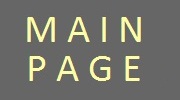In 1286 the duce Leszek the Black gave permission to build defensive wall around Krakow. In that time it was a great challenge, to encircle Krakow one had to build four kilometers long wall and digg moat around. The work was continued by other dukes and kings, among whom Casimir the Great is the most important. Effect of the work - 47 towers and 7 gates made of lime-stone (romanesque part) and bricks (ghotic part). To fill in the moat with water a small river Rudawa was used, especially for this purpose artificial bed was digged. Every tower was defended by other professionals, hence names of the towers: 'Carpentiers','Schoemakers', etc. Every gate got name informing about certain place to which one could go by leaving through the gate. Therefore the gates were named:
• Saint Florian - the only existing gate; leading the Saint Florian Church and the adjacent town Florence (Kleparz)
• Sławków Gate - through the gate one could leave Krakow for Sławków, town distanced about 50 km from Krakow
• Shoemakers Gate - because the street connecting Main Market with the gate was inhabited by shoemakers, the gate was also defended by this profession.
• Vistula Gate - road through this gate lead to the Vistula River
• Grodzka Gate - the gate closest to the Wawel Castle. Grodzka in old Polish means 'town'. Next to the Grodzka gate Royal Armoury was erected.
• Slaughtery Gate - as the gate was protected by this professionalists. In 14th century the gate was closed and instead to new gates were erected:
• Saint Nicloaus Gate - leading to Saint Nicolaus church
• New Gate - the closest to Small Market Square.
In the end of 15th century the king John Olbracht reinforced northern part of the wall and erected round building called Barbicane. The Barbicane was connected with Saint Florian's Gate by two walls called neck.
Weapon to defend the wall was kept in two armouries. First, so called Royal Armoury was erected next to the Grodzka Gate. Today the building serves as the Jagiellonian University faculty of Polish Language. The second, so called Town Armoury was given to the faimly Czartoryski. Members of the family bought part of the former cloisted and one more tenement house and created Czartoryski's Museum - one of the reachest private galerries in this part of Europe.
The buggle call from Mariacki Church is directly connected with the walls. In middle ages all gates were closed, those who came late had to wait until morning. The buggle call was a sign to open/close the gates.
At the beginning of 19th century the walls were succesively destroyed. Instead of the moat beautiful park called Planty was planted.
Pay attention to :
• Barbicain
• Saint Florian's Gate
• Relics of the Slaughtery Gate in Gródek
• Defensive Wall Museum
• Planty













